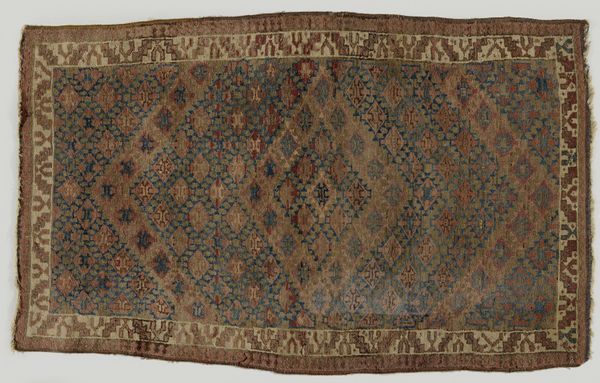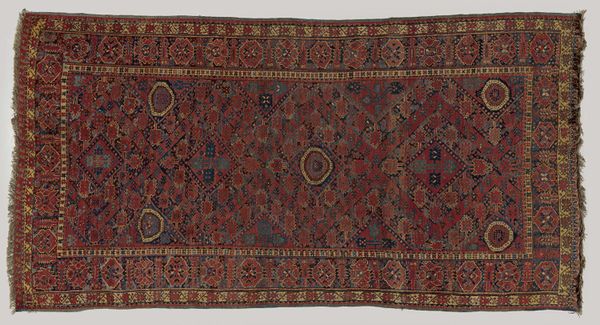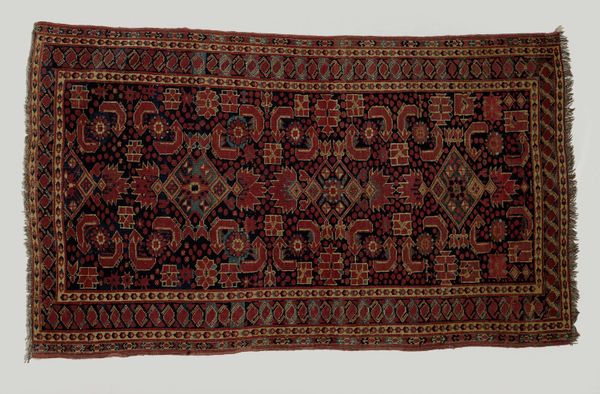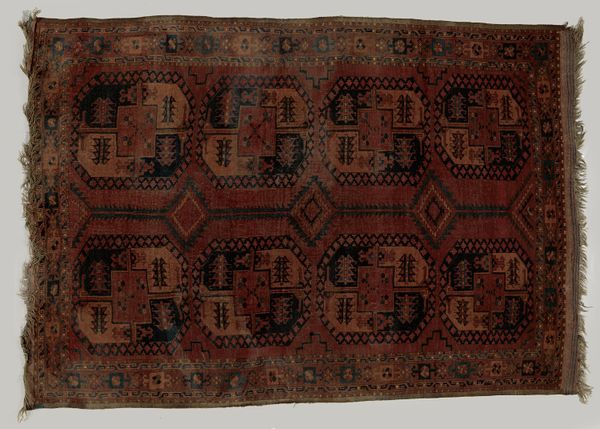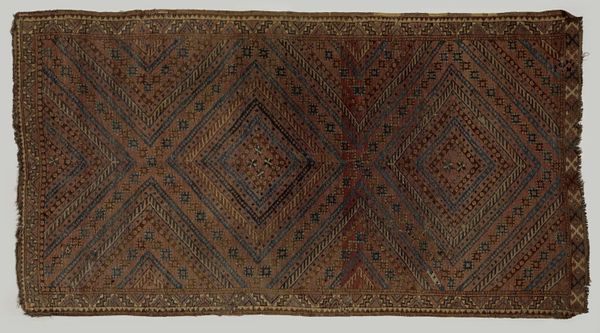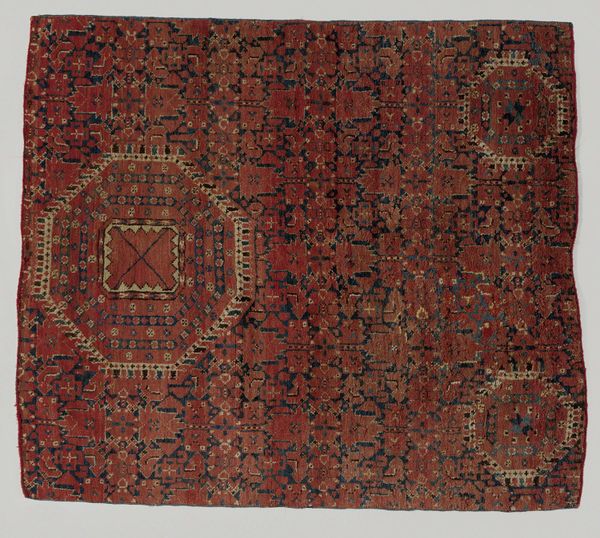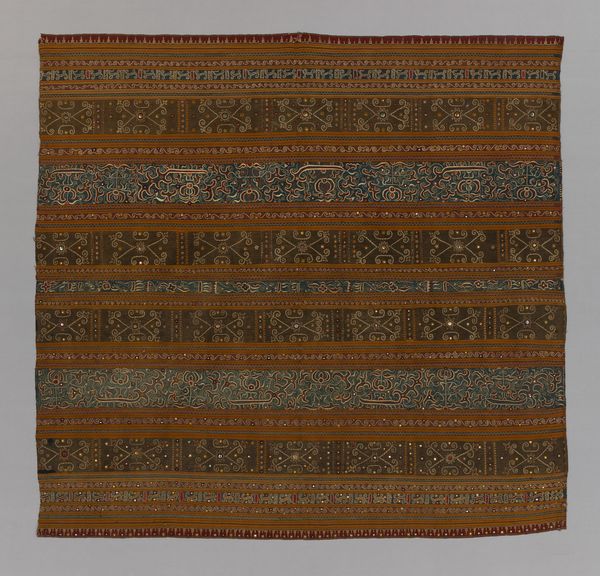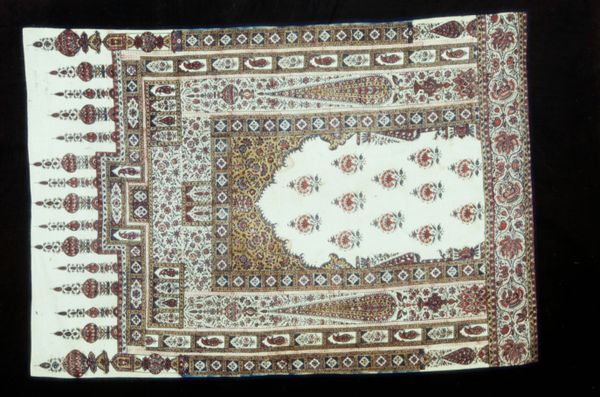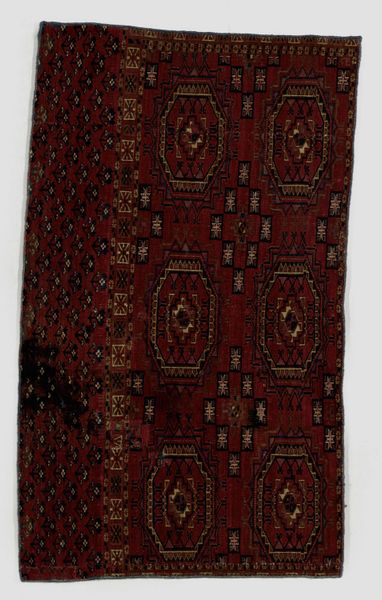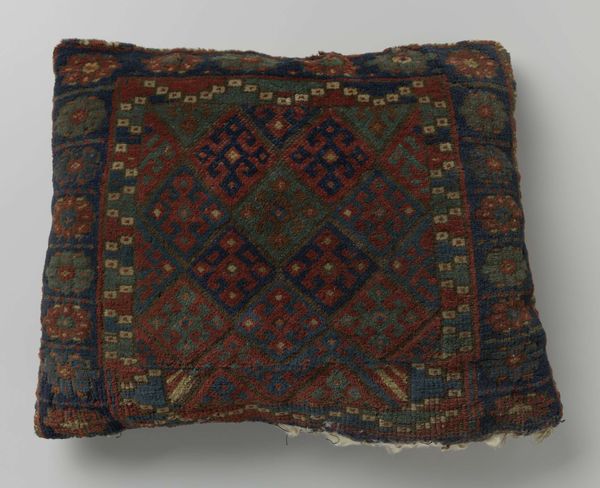
Ruitenkleed. Middenveld met rasterwerk waarbinnen kruisvormige geometrische ornamenten. Blauwe rand met achtpuntige sterren en voluutrozetten. 1800 - 1900
0:00
0:00
fibre-art, weaving, textile
#
natural stone pattern
#
fibre-art
#
naturalistic pattern
#
textured
#
weaving
#
textile
#
organic pattern
#
geometric
#
repetition of pattern
#
wooden texture
#
texture
#
natural texture
#
layered pattern
#
organic texture
Dimensions: height 386 cm, width 104 cm
Copyright: Rijks Museum: Open Domain
Editor: This is a textile piece, a rug woven by the Jaffi people between 1800 and 1900. The diamond and star patterns are quite striking, but I'm curious how this type of textile functioned within its historical context. What do you see in this piece, beyond the geometric beauty? Curator: Beyond aesthetics, consider how textiles like this are powerful signifiers of identity and cultural expression. This rug, with its repetitive geometric motifs, embodies the complex interplay between tradition, labor, and representation within the Jaffi community. Does the uniformity of the pattern evoke certain ideas around communal values for you? Editor: I see what you mean. The patterns are repetitive and ordered, which seems to speak to societal structures. The act of weaving itself, repeated over and over, also has symbolic implications. How does it engage with the Pattern and Decoration movement? Curator: The Pattern and Decoration movement sought to challenge the Western art hierarchy that valued painting and sculpture above textiles and other so-called 'minor' arts. By emphasizing pattern, color, and craft, the movement implicitly challenged notions of gender and race, reclaiming art forms traditionally associated with women and non-Western cultures. Do you feel that looking at this piece now invites us to deconstruct art historical power structures? Editor: I do. Recognizing this rug as a form of cultural expression, laden with meaning and political weight, challenges the way we've been taught to perceive art. So, what’s been most interesting about studying this textile today? Curator: This rug invites us to reflect on the power dynamics embedded in art and culture, as well as the importance of marginalized voices and artistic traditions. Editor: Definitely something to think about as we move forward!
Comments
No comments
Be the first to comment and join the conversation on the ultimate creative platform.
